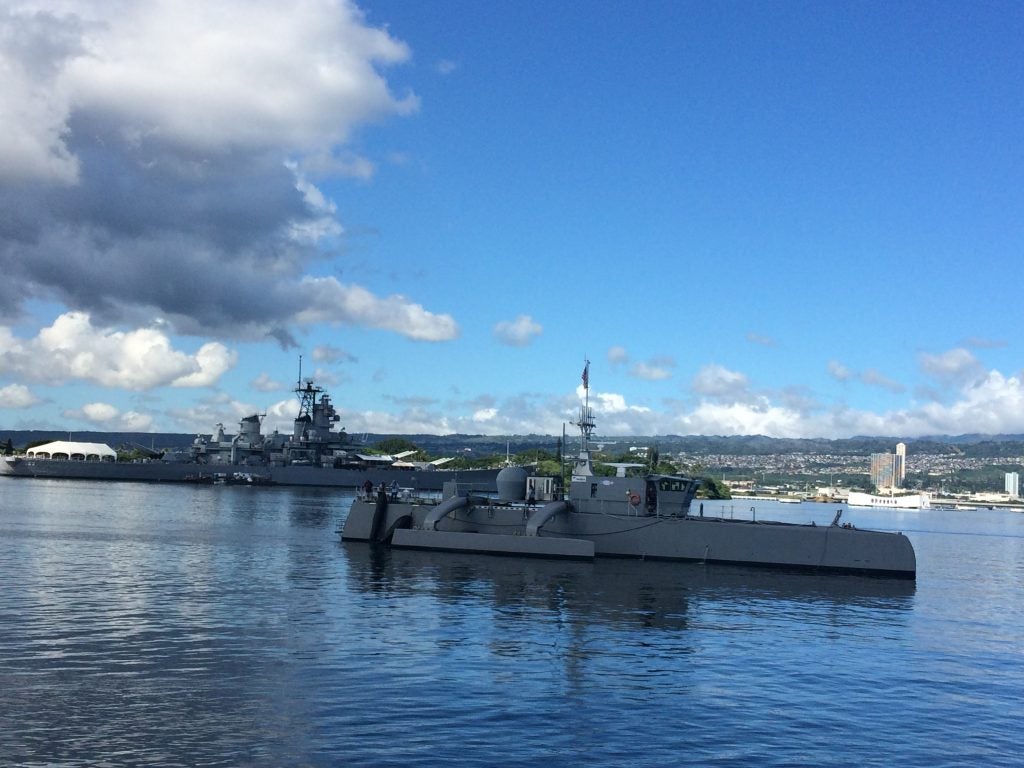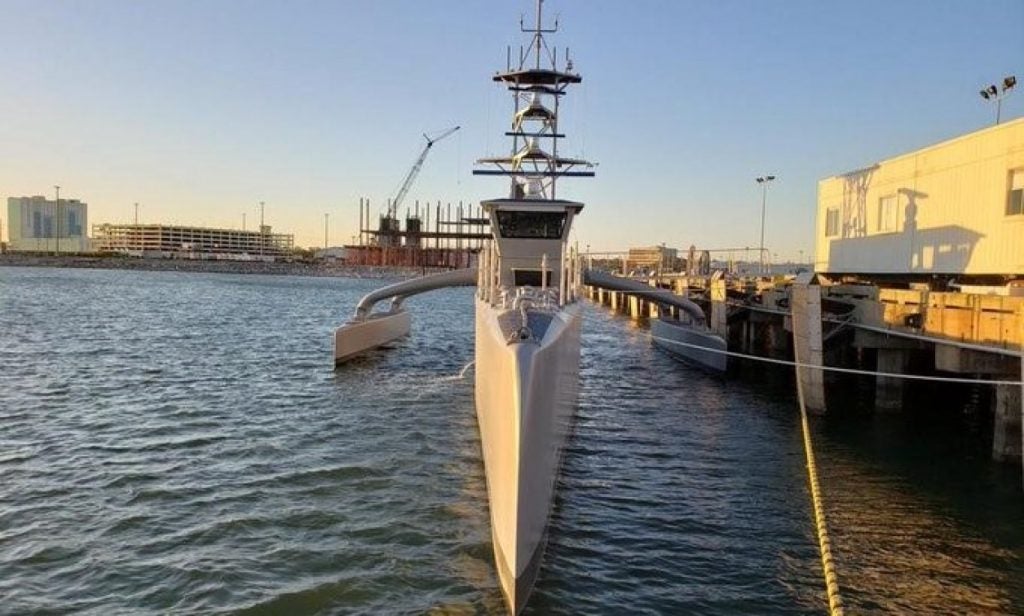Leidos Completes Delivery Of US Navy’s Seahawk Autonomous Vessel
Leidos announced that it had completed delivery of its Seahawk autonomous vessel to the US Navy on 7 April. The delivery comes just under three and a half years after the awarding of the contract to build the ship by the Office of Naval Research in December 2017, with the majority of the work on the $35.5 million cost-plus-fixed-fee contract carried out on the Mississippi Gulf Coast.
The composite-hulled trimaran is described by Leidos as a “long-range, high-availability autonomous surface vessel”, categorized as a medium-displacement unmanned surface vehicle (MDUSV) similar to Leidos’ Sea Hunter. Like the Sea Hunter, the Seahawk is “substantially larger” than other Navy USVs currently in service, offering similarly sized increases to range, seakeeping and payload capacity compared to smaller USVs.
“As technology continues to accelerate and adversaries become more sophisticated, our customers must constantly evolve,” said retired Rear Adm. Nevin Carr, Leidos Vice President and Navy strategic account executive. “We are honored to provide this latest technological advancement to America’s sailors who fight to keep the seas open and free.”

The Seahawk is designed to operate with minimal human intervention, allowing it to serve as a “forward-deployed and rapid-response asset in the global maritime surveillance network”. Dan Brintzinghoffer, Leidos Vice President for Maritime Solutions says that Leidos did not “just put an autonomous navigation system onto an existing ship”. He continued: “Every mechanical and electrical system on Seahawk has unique configurations designed to run for months at a time without maintenance or a crew.” To keep the systems powered, the Seahawk can carry up to 14,000 gallons of fuel to power its twin diesel engines for “a substantial length of time”.
According to Leidos, the Seahawk incorporates upgrades based on over 300 lessons learned during joint evaluations by Leidos and the Navy of Sea Hunter. These upgrades include improvements to electrical systems, a payload mounting system and test operator control station. The Seahawk will be operated by Surface Development Squadron 1 out of San Diego, alongside the Sea Hunter.

